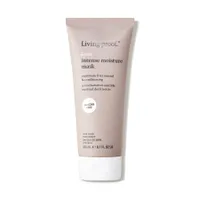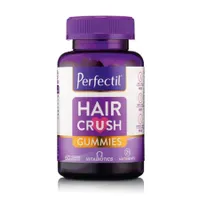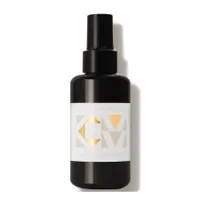Expert tricks for frizzy hair—get to the root of frizz once and for all
Frizzy hair problems? These are the products and tips our beauty team swears by


Frizzy hair is a beauty annoyance almost everyone can relate to. Chances are if you've got hair, you've got frizz. That's not to say those wispy flyaways have to bother you. If you live in harmony with the halo above your crowning glory, great stuff. There is nothing inherently bad, unhealthy, or wrong with frizz. So you won't hear us telling you it must be battled or 'tamed' unless that's what you're looking for.
But the thing is, you're here, aren't you? So making the fairly safe presumptive leap that you have landed on this page because you aren't a fan of your frizz and would like to find solutions aside from ironing it into oblivion with the best hair straighteners or spending hundreds on a Brazilian blowout, welcome!
Whether you have a long hairstyle, short hairstyle, curly, straight, choppy crop, or artfully created box braids, frizz happens to us all. And just as there are many ways in which frizzy hair can manifest, there are also many ways we can go about taking it down a notch.
Frizzy hair: causes, treatments and styling tricks
What causes frizzy hair?
Frizzy hair takes many forms, but all roads lead back to moisture—a lack of it within the hair and plenty of it in the atmosphere, to be precise. Hair that's damaged or dehydrated has roughed-up cuticles (the outer layer of overlapping cells), making it vulnerable to the elements. That's why warm, wet weather equals haywire hair, and why the best hair products for humidity work as a kind of "shield" over strands. "Humidity is moisture in the air which causes the hair to swell and become frizzy, wavy, and out of place," explains A-List stylist and Babyliss Ambassador Syd Hayes Any of the following can contribute to this moisture-sapping and leaching process:
- Dry or damaged hair
- Humidity
- Very hot showers or baths
- Harsh, stripping hair products
- Chemical damage from coloring
- Heat styling
- Over-washing hair
- Friction from towel drying hair
Even if you treat your hair with extreme care, some hair types are naturally more prone to frizzy hair. Those with fine hair have surface-level frizzies and baby hairs around the hairline, with the rest of the hair lying flat underneath. Curly hairstyles are susceptible to frizz at the ends as natural moisturizing oils find it trickier to travel from the scalp to ends. Straight hair with damaged ends, perhaps from balayage hair or other color services, can also experience this fluffy tip phenomenon.
If you have thick, coarse hair that feels dry from root to tip, you might have frizz that can cause the hair to swell up throughout into a candyfloss-like effect. Naturally, any mention of this kind of frizz means it's time to wheel out the example of Monica in that Barbados episode of Friends. No apologies for including this old beauty writing cliché—it paints the picture perfectly.
How to prevent frizz
The benefit of frizzy hair being a common problem is that we have plenty of universal solutions at our disposal. These simple steps can make all the difference:
Sign up to our free daily email for the latest royal and entertainment news, interesting opinion, expert advice on styling and beauty trends, and no-nonsense guides to the health and wellness questions you want answered.
- Focus on condition: This all comes back to condition. Using bond builders for hair such as Olaplex or K18 can really help with this. As can applying one of the best hair masks for hydration at least once a week, or you could opt for a natural remedy such as coconut oil for hair. Avoid aggressive chemical treatments, lay off heat styling when you can, and use heat protection for hair when you can't.
- Sleep on silk: One of the best silk pillowcases will help prevent the cuticle from getting roughed up overnight, or use one of the best silk hair wraps.
- Wash and dry carefully: For curls, you could do a lot worse than following the curly girl method. For everyone else, use the best shampoo and conditioner for your hair type and follow Gareth Williams, Senior stylist at SALON64's frizz busting washing technique:
"Before washing, thoroughly brush your hair, taking your brush through the areas beneath your hair where friction can occur from scarves and coats. Thoroughly wet the hair to help the product evenly spread. Use a small amount of product and work this through your hands before running through your hair using a technique called “rotary,” which means using tips of fingers and thumbs," advises Williams.
And as for conditioning and drying? "Leave the conditioner on for a few minutes, so the hair receives all its benefits before rinsing," explains Williams. "Get a towel that is not too old and still quite soft and wrap it around your hair gently. Firmly press onto the towel so it can soak up all moisture from the hair but do not rub! This will damage the cuticles, and cause friction."
A professional frizz-busting blow dry
Your hair drying technique is probably the most crucial piece of the puzzle for making frizzy hair appear smooth and sleek. For those with curly hair, learning how to use a diffuser and attaching one to your dryer is key, or for straight hair pop a smoothing nozzle on the end.
"Firstly, prep hair with heat protection," advises Hayes. "This will help to create a barrier between your hair and the tools. It’s important to use a hairdryer efficiently. Turning the dryer up to the fastest and hottest setting can overheat the cuticle and lead to frazzled, dry ends. Starting low will dry the hair efficiently without over-drying the ends."
After rough-drying to about 90% dry, it's time to finish and style your hair. Use round brushes if you're going for a salon-style bouncy blow dry or a paddle brush for straight and smooth. Aim the nozzle down the hair shaft to ensure the cuticle lies flat and prevent frizzy hair.
"Once you have dried your hair, use the cool setting to set the style and for an added boost of smoothness and shine," advises Hayes. "Remember heat allows the hair to bend into a new shape, and cooling will set the hair."
Our beauty team's favourite frizz-busting products
Living Proof No Frizz Intense Moisture Mask | RRP: $45.60/£33
One of the best hair masks for frizz, this really delivers on its promises with a super-nourishing yet silicone-free formula. This makes it a great all-rounder for fine or thick hair as it won't coat strands in heavy residue. Use once a week to instantly smooth and boost hydration.
Perfectil Hair Crush Gummies | RRP: $30.35/£24
Biotin, selenium, and zinc are the ingredients to know for healthy nourished hair and Perfectil Hair Crush Gummies pack in all three. Plus, they look and taste like a Haribo sweet, which certainly helps with remembering to take them every day.
Silke London Hair Wrap | RRP: $69/£50
This 100% silk wrap stops your hair from roughing itself up against your pillow, helps it hold onto oils for natural moisture, and preserves a smooth style overnight. This is particularly good on thick, coarse, or natural afro curl types.
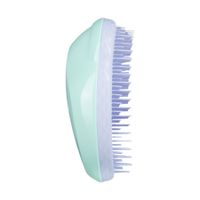
Tangle Teezer Fine and Fragile | RRP: $12/£12
Surely the best known—and best-loved—detangling brush of all time. This fine and fragile version is even more kind, with supremely soft and flexible teeth that gently detangle and smooth without even a suggestion of tugging or breakage.

Aquis Lisse Luxe Hair Turban | RRP: $30/£30
A thick, soft turban-style towel designed specifically for hair. The absorbent waffle material gently pulls moisture away from the hair without the need for any aggressive, cuticle-roughing back and forth. Looks chic on your towel rail too.
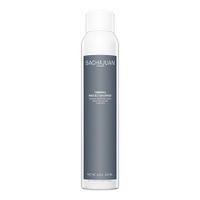
Sachajuan Thermal Protection Spray | RRP: $36/£24
The absolute dream with hair heat protection is that you find one that does the job without feeling like it's there at all. This light mist from Scandi-chic brand Sachajuan is just that. Superfine to the point of total weightlessness, it creates a frizz-reducing barrier between your hair and your heated tools.
BaByliss Hydro Fusion Air Styler | RRP: $82.80/£60
If you struggle to create a professional-looking and smooth home blow dry using round brushes (you and me both), I can't speak highly enough of the best hair dryer brushes. They do the hard work for you—great if you find it too fiddly to work the hair dryer with a separate round brush.
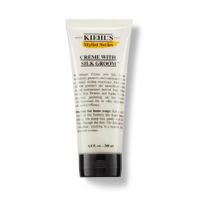
Kiehl's Creme with Silk Groom | RRP: $26/£30.50
"My favorite [finishing cream] has to be Kiehl's Creme with Silk Groom, which holds down those flyaways without it getting greasy or sticky and allows you to run through your hands easily still without tension," says Hayes.
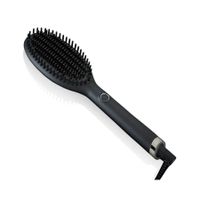
GHD Glide Hot Brush | RRP: $169/£139
If you have curly or textured hair and don't want to knock the life out of it in the name of de-frizzing, this heated ceramic brush releases ions, which help keep static at bay can be used to smooth lengths, add volume to roots, and, if you fancy, little kicks through the ends.
Charlotte Mensah Manketti Oil Finishing Mist | RRP: $50/£38
A beautifully luxurious frizz-smoothing oil in lightweight mist form. It can be used wet or dry hair; if your hair is curly or on the thicker side dry is best, while medium or straighter hair may prefer to blow dry it in. It's also a must-have for natural hairstyles wanting to embrace texture (minus the frizz!)

Percy & Reed Volumising No Oil Oil | RRP: $20.70/£15
Confusing name, great product. This is indeed no-oil oil because it's not an oil— it's a serum. This slippery, silky texture is perfect for keeping flyaways sealed down on finer hair types without making roots appear greasy or lank.
woman&home thanks Syd Hayes of Babyliss and Gareth Williams of SALON64 for their time and expertise
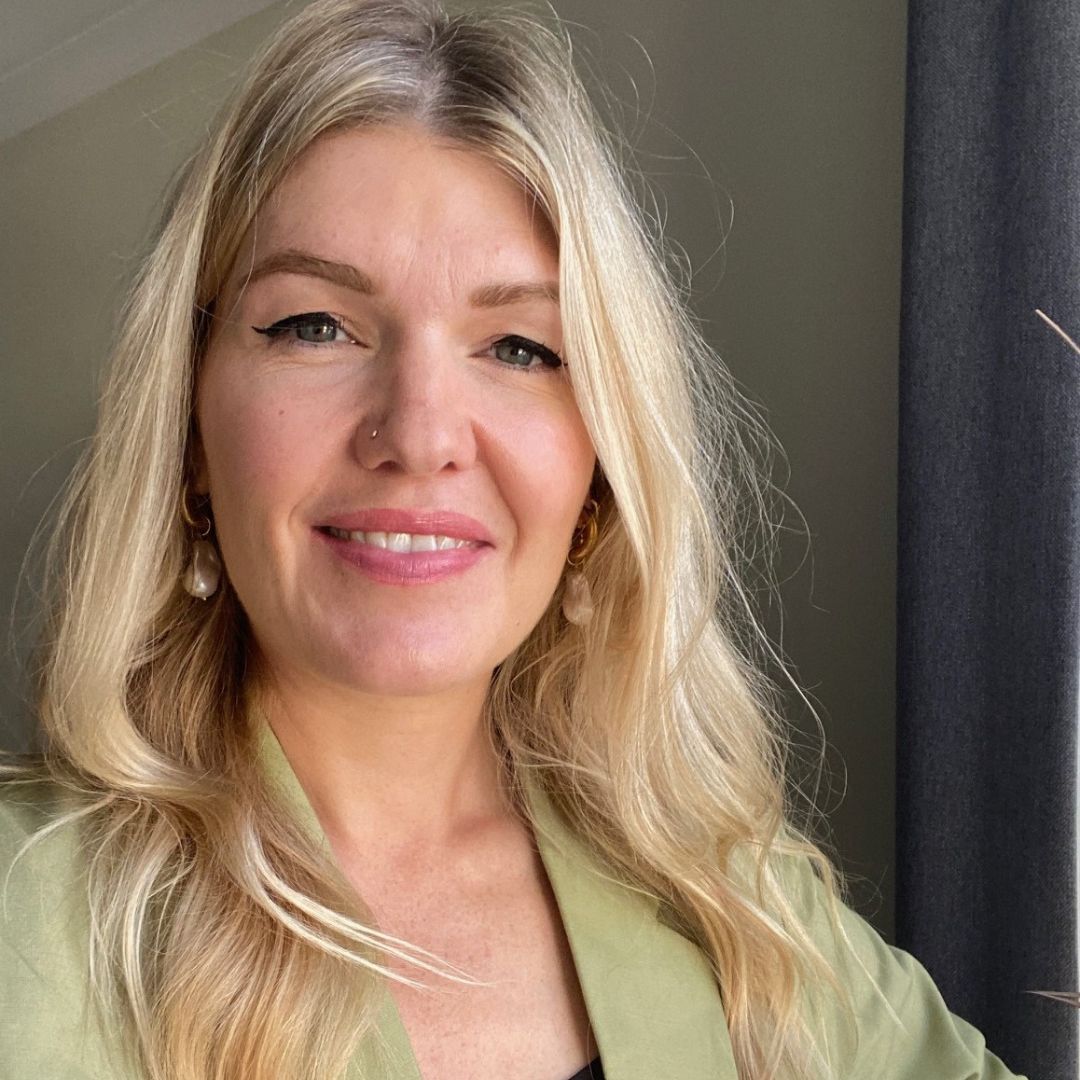
As woman&home's Beauty Channel Editor, Fiona Mckim loves to share her 15+ years of industry intel on womanandhome.com and Instagram (@fionamckim if you like hair experiments and cute shih-tzus). After interning at ELLE, Fiona joined woman&home as Assistant Beauty Editor in 2013 under industry legend Jo GB, who taught her to understand ingredients and take a cynical approach to marketing claims. She has since covered every corner of the industry, interviewing dermatologists and celebrities from Davina McCall to Dame Joan Collins, reporting backstage at London Fashion Week and judging the w&h Beauty Awards.
